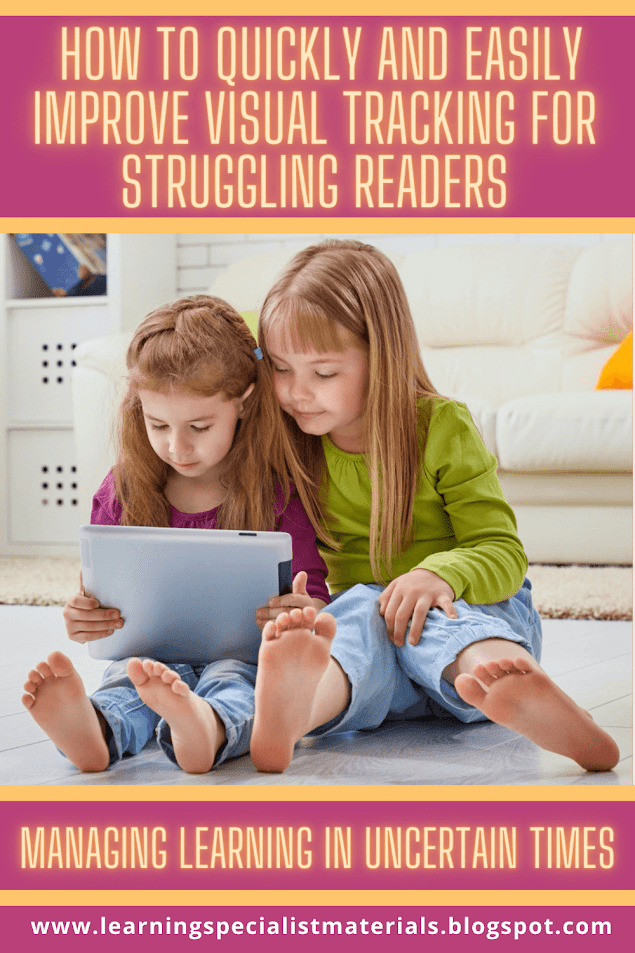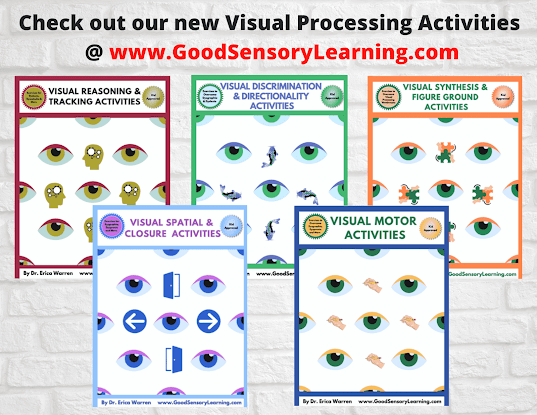This week I wanted to tell you about my online store, Good Sensory Learning. I’m Dr. Erica Warren, and I established this site so I could share all the materials that I have created over the last 20+ years as a learning specialist and educational therapist. When I first began my private practice, Learning to Learn, I had great difficulty finding fun and multisensory materials for my students that were effective and engaging. So back in 2005, I made it my mission to design and distribute high-end, remedial products as well as memorable, motivating lessons that bring delight to learning. If you would like to try a free sampling of my activities , CLICK HERE . How Are the Products Organized at Good Sensory Learning? You can download my Free Printable Catalog or you can browse the site using the grey “search all products” bar in the top right of any page with keywords such as dyslexia, working memory, and executive functioning. What’s more, drop down menus in the red banner allow you t...
Many struggling readers have a difficult time making sense of text because they lose their place on the page. In addition, some find it challenging for their eyes to track from one line of text to the next, and they often read the same line, again and again. Skipping over words, or even missing a line of text altogether is not uncommon. As you can imagine this could have a profound impact on one's interest in books and can negatively impact reading stamina, speed, and comprehension.



Dr. Erica Warren is the author, illustrator, and publisher of multisensory educational materials at Good Sensory Learning. She is also the director of Learning to Learn and Learning Specialist Courses.
What is Visual Tracking?
Visual tracking is the ability to control the movement of vision with the eye muscles. This may involve the eyes moving left, right, up, down, and even in a circular motion.
How Do Visual Tracking Weaknesses Impact Reading?
Poor visual tracking can make it very difficult for individuals to read because their eyes struggle to maintain a fluid motion when scanning the words throughout the page. Instead, they constantly lose their place.
Why Do Struggling Readers Often Have Visual Tracking Problems?
There are two main reasons poor readers have difficulties with visual tracking:
- Some readers may simply have poor eye coordination, often referred to as a weakness in ocular motility or oculomotor functions.
- Others may be constantly moving their eyes back and forth along the text because they are having difficulties decoding words, paying attention, or making sense of what they are reading.
What Can Be Done to Improve Visual Tracking?
My number one favorite activity to strengthen visual tracking for those with weak ocular motility, decoding problems, or even poor attentional skills is to use the text to speech app Voice Dream Reader. Although many text to speech apps do offer highlighted words that are synchronized with the speech, as well as text size and color adjustments, Voice Dream Reader offers additional features such as distraction-free viewing and Pac-Man Mode.
What is Distraction-free Viewing and Pac-Man mode?
- Distraction-free viewing is enabled when pinching two fingers together on the screen. This activates the viewing of only three lines of text at a time. This can make it much easier to focus on one's place while still exercising visual tracking.

- Pac-Man Mode causes the words to disappear from the page a fraction of a second before they are spoken by the text-to-speech. This forces the eyes to read in a fluid manner and can train the brain to move across the line and onto the next with no missed text.
Click on the Video Below to Watch a Demonstration of Voice Dream Reader and Pac-Man Mode:
Can Eye Exercises Also Improve Visual Tracking?
Yes, as the saying goes, "practice makes perfect." I do offer another blog that reveals: 12 Free Ways to Strengthen Visual Tracking.
Products to Purchase That Develop Visual Tracking and More:
If you are looking for products that can improve tracking and other visual processing problems such as reversals, come learn more about the Reversing Reversals series. I also have a new series of products for the many visual processing areas!
I hope you found this blog helpful. Reach out any time.
Cheers, Dr. Erica Warren
Dr. Erica Warren is the author, illustrator, and publisher of multisensory educational materials at Good Sensory Learning. She is also the director of Learning to Learn and Learning Specialist Courses.- Blog: https://learningspecialistmaterials.blogspot.com/
- YouTube Channel: https://www.youtube.com/user/warrenerica1
- Store: http://www.Goodsensorylearning.com/
- Courses: http://www.learningspecialistcourses.com/
- Newsletter Sign-up: https://app.convertkit.com/landing_pages/69400 You will need to enter your email address to sign up for our mailing list.
- Email address: erica@goodsensorylearning.com

2020 Erica Warren LLC. All rights reserved. Dr. Warren does not provide medical advice or diagnoses.
- Blog: https://learningspecialistmaterials.blogspot.com/
- YouTube Channel: https://www.youtube.com/user/warrenerica1
- Store: http://www.Goodsensorylearning.com/
- Courses: http://www.learningspecialistcourses.com/
- Newsletter Sign-up: https://app.convertkit.com/landing_pages/69400 You will need to enter your email address to sign up for our mailing list.
- Email address: erica@goodsensorylearning.com
2020 Erica Warren LLC. All rights reserved. Dr. Warren does not provide medical advice or diagnoses.

Comments
Post a Comment